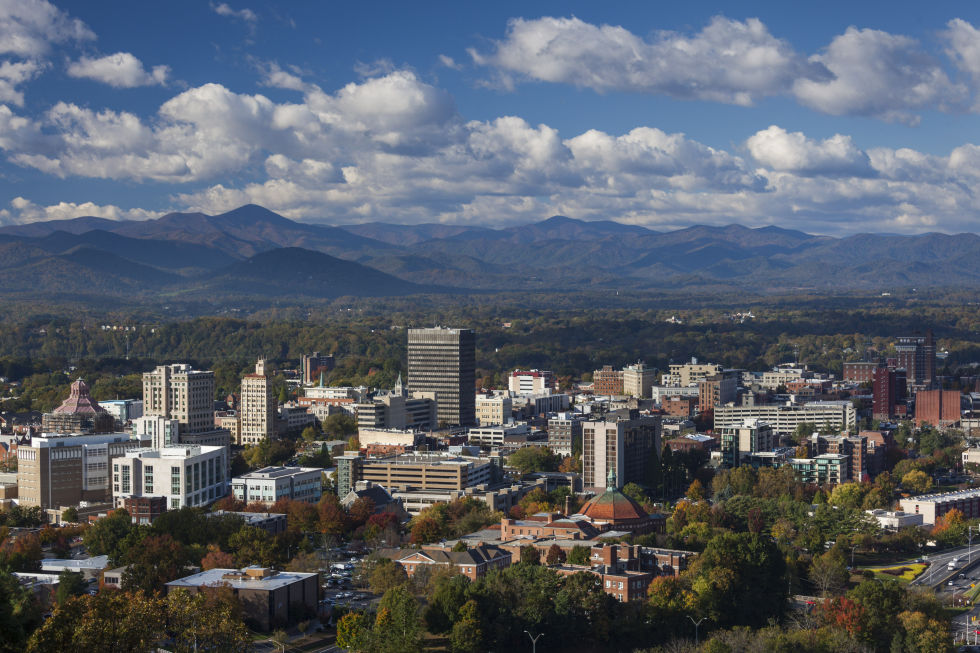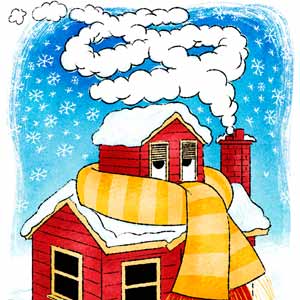
If feeling cozy is important to you, it may be time to consider a move down south.
BY BRIDGET MALLON
For the third year in a row, Honeywell Heaters has released their list of the Top Ten Coziest Cities In America, and we're definitely ready to pack our bags.
(Yes, spring is predicted to come early, but who can resist a cozy, peaceful home until then?)
To determine which cities offer the best in cozy comfort, Honeywell teamed up with environmental scientist Dr. Ted Myatt, and just like last year, they considered how many restaurants, coffee shops, museums, florists, breweries, and bed and breakfasts each area has. This year, however, they added a few more factors as well, including specialty grocery stores, bookstores, and bakeries (AKA places that instantly make you feel warm and fuzzy).
Topping the list: Asheville, North Carolina, while last year's winner, Portland, Maine, fell to number five.
Grab a blanket and read on to see the full list, below.

1 ASHEVILLE, NORTH CAROLINA
Asheville's plethora of bookstores, spectacular mountain views, and temperate climate helped the Southern city secure the win.
2 BOSTON, MASSACHUSETTS
Although it still hasn't reclaimed the top spot — Boston came in first in 2014 — Beantown's second place finish is nothing to scoff at. The city's number two placement is thanks in part to the variety of specialty grocery stores, bookstores and bakeries in the area.
3 SALINAS, CALIFORNIA
2016 is the first time this charming California town has made an appearance on Honeywell's list, but its mild climate, as well as its abundance of bakeries and specialty stores could make it a mainstay.
4 PORTLAND, OREGON
Portland, Oregon impressively moved from number ten to number four this year, thanks in part to its numerous coffee shops and microbreweries.
5 PORTLAND, MAINE
The other Portland may have fallen after earning the top spot last year, but number five is still mighty impressive. The seaside city has the most coffee shops per capita, but is also home to plenty of specialty food shops, bookstores, and restaurants.
6 SANTA ROSA, CALIFORNIA
This temperate city in California's wine country is obviously home to plenty of wineries, but bakeries, bookstores, farms and forests all abound as well.
7 PROVIDENCE, RHODE ISLAND
Providence fell one spot this year, after finishing sixth in 2015, but its many coffee houses and bakeries still make it a cozy place to live or visit.
8 SPOKANE, WASHINGTON
Making its first appearance on the coziest cities list is Spokane, Washington. The Pacific Northwest city may get a fair amount of snow, but its many coffee shops offer more than enough space to cozy up.
9 PROVO, UTAH
According to Honeywell, Provo is Utah's cultural hub, so there are plenty of opportunities for cozy nights spent enjoying the latest in nighttime entertainment. And the moderate temps mean that winter is never too harsh, even when it snows.
10 CHATTANOOGA, TENNESSEE
Yet another newcomer to the list, Chattanooga earns its cozy badge of honor thanks to its large number of bookstores and rapidly growing downtown area.
